
|
|
|
ATREE's new investments in
climate change research: mitigation strategies and modelling
ATREE has positioned its research on land, water, livelihoods, forests,
ecosystem processes and ecosystem services within the broader
frames of climate change and governance. With respect to climate
change, this has translated into looking at impacts of climate change
and extreme weather events, and adaptation and coping strategies.
This post hoc approach will now change with ATREE's announcement
of a new research programme on climate change, which will have
capabilities in climate modelling and mitigation strategies.
Both aspects of climate change research—mitigation, and
adaptation—are relevant to India. The question of mitigation is a
challenging one for developing countries. The current level of per
capita emissions is low, the historical responsibility of this region is
also low, and the need for poverty alleviation (and therefore some
increases in energy consumption) is high. Conventional development
strategies depend upon increasing throughputs of fossil fuels and
other mineral resources. The new climate change programme will
explore strategies that enable growth and development without
compromising the environment.
The climate change programme will build on existing ATREE's work
in climate change; and in collaboration with other programmes on
Forests and Governance; Land, Water and Livelihoods; Ecosystem
Services and Human Wellbeing; and Ecosystems and Global Change.
ATREE has advertised faculty positions for 'Renewable energy policy
and environmental governance'; 'Urbanization and climate change';
and 'Climate modelling for impact/adaptation research'. Details are
available on http://www.atree.org/node/1008. Oak Foundation,
Geneva, and the Royal Norwegian Embassy, New Delhi are funding
this research.
Dr. Bawa awarded MIDORI Prize for Biodiversity
Dr. Kamal Bawa, President, ATREE, received the MIDORI Prize for
Biodiversity on October 15 in Pyeongchang, South Korea. The MIDORI
Prize is co-hosted by the Secretariat of the Convention on Biological
Diversity and the AEON Environmental Foundation, Japan. The award
was presented at the meeting of the Conference of Parties (COP-12)
to the Convention on Biological Diversity, which was underway in
South Korea.
The aims of the MIDORI Prize are to extend the developmental
influence of the individual's efforts to various projects relating
to biodiversity throughout the world, and to raise awareness
about biodiversity. The prize carries a cash award of US$100,000.
Dr. Bawa received the MIDORI Prize for his contributions to research
|
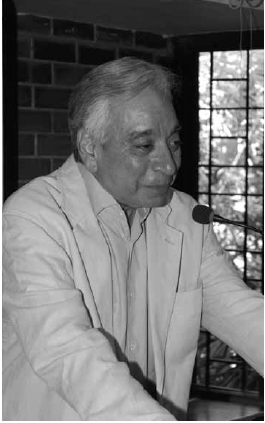
in ecology of tropical forests, sustainable
use of tropical forests, climate change in
the Himalaya; for promoting engagement
of civil society in conservation efforts; and
for his leadership role in setting up ATREE.
Environmental awards are a good
indicator of what the world perceives as
important in the sphere of environment.
Ideas of sustainability and inclusiveness,
community engagement, governance,
reflected, for instance, in the vision of
the MIDORI prize, the Gunnerus Award in
Sustainability Science (2012, Dr. Bawa),
the Elinor Ostrom Award on Collective
Governance of the Commons (2013, Harini
Nagendra, Adjunct faculty, ATREE) reward
the science, as well as ideas of its practical
application on the ground.
Dr. Kamaljit Bawa has taught at the
University of Massachusetts, Boston for
more than 40 years. He founded ATREE in
1996.
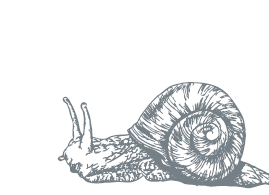
|
Research
Bats and ancient temples
in Tamil Nadu
The districts of Tirunelveli and Thoothukudi
in south Tamil Nadu are known for the
many ancient temples built along the
river Tamiraparani. Many of these temples
are over 500 years old; some are more
than 1,000 years old. Not only are these
temples culturally important, they also
harbour a significant diversity of life forms,
set as they are as islands of comparative
non-disturbance in a sea of cultivated
landscape—mostly paddy agriculture—
which landscape leaves very little natural
habitat for biodiversity. The temples, with
their trees, gardens (nandavana), complex
architecture and general isolation from
extreme disturbance have provided a niche
for several species to exist in. However,
this secluded niche, which provides
sanctuary to trees that are 100+ years old
and considered sacred, butterflies, birds,
reptiles, insects and mammals, is eroding.
In 2012, ATREE initiated a survey to
document biodiversity in these temples.
The focus was on bats, with support
from Bat Conservation International.
We surveyed 70 temples; 47 had six
species of bats. We counted about 4,300
|
bats. The most common species was
Hipposideros speoris, Rhinopoma hardwicki
occurring less often; both insectivorous
(Microchiropteran) species. These bats
were either in abandoned areas in the
temple complex, in crevices between stone
pillars, or in the corridors surrounding the
sanctum sanctorum, where the ceiling was
high.
In recent years, government and corporate
bodies have expressed interest in taking
up temple maintenance and renovation. So
high-decibel electric drums, public address
systems, and extensive lighting of the
complex are replacing the drums, chanting
of mantras, oil lamps and shallow lighting
of the past. The renovators have also
incorporated bat preventive measures. So
mesh has been placed on towers, crevices
have been plastered over, and the stone
walls are regularly power washed.
We found that the bats tend to stay on in
spite of all this. Almost all species were
intolerant to noise; some tolerated light
and even minimum levels of maintenance
work. What is important is that the bats have
some place to move into while temples are
renovated or cleaned: an abandoned room
in the temple complex, or other temples in
the area.
Why should there be bats in temples?
First, there are no alternative habitats for
bats in the landscape since most rocky
areas have been quarried. Second, earlier,
|
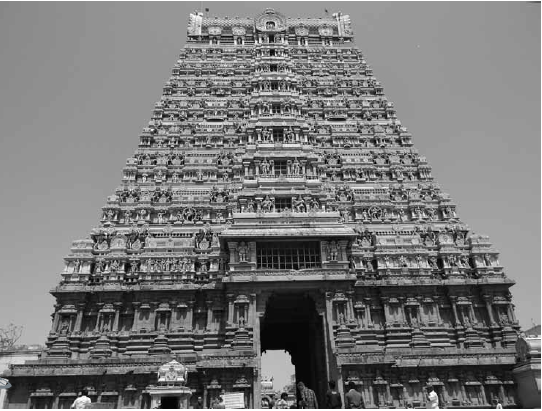 |
 |
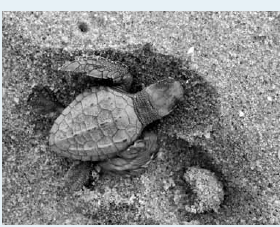 |
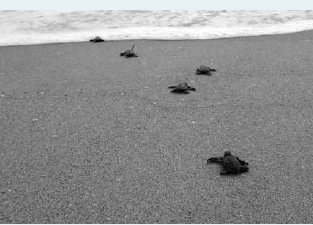 |
|
|
In coastal Nellore, there's an isolated village
with not more than 300 people living there.
Lakshmipuram. Usually, back home at
Chennai, the beach crowds up during turtle
walks. It is not easy to shut down the noise
and notice smaller things. This village has so
much space.
That night, we were releasing around thirty
hatchlings. Twenty nine scuttled away easily
in to the sea, but one baby was just so slow. He
crawled towards the large flashlight that we
used to guide them. Everything was so bright
and contrasted under the big flashlight.
The light bounced off the sand and lit and
shadow-ed every fold on the hatchling. I
followed it and studied the formation of
scutes on its carapace. Everything so clear
and defined. Noiseless.
Suddenly, something moved next to me. A
ghost crab. What if it eats the hatchling? I
was too scared to let them get close to each
other. But, I realized these crabs are not so
easy to film and it was only because of the
light source behind it that I actually noticed
him. I bent down and saw it was holding on
to some kind of orange plastic piece. I hope
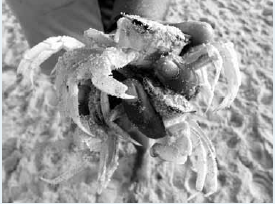
|
it didn't eat it. The hatchling diligently kept
to its pursuit. Dusting off the sand on its eyes
with its flippers, it slid on its belly towards
the waves. I sat there for some time, just like
the baby turtle, my belly on the sand, and
watched them.
Rahul Muralidharan joined ATREE as a PhD
student in 2013. He wrote this piece on
the turtle hatchling after graduation, when
he was teaching English and Ecology to
primary school children. Rahul calls himself
a marine biologist.
How did Rahul arrive at what he is doing
now? Rahul says he was deeply drawn to
environmental studies and conservation
during his five years at Madras Christian
College. As an undergraduate he got
involved in local sea turtle conservation
initiatives, where he worked with fishermen
and turtles. To further this interest he
decided to take up marine biology for his
master's degree in 2009, electing to work
on a coastal species of dolphins known as
the Indo Pacific humpback dolphin for his
thesis. Humpback dolphins occur along the
Chennai coast during particular seasons
and are frequently sighted by artisanal
fishermen. Rahul worked with fishermen to
understand the presence and movement
patterns of these dolphins. Now, for his
PhD, Rahul is looking at humpback dolphinfishery
interactions in the Tamil Nadu
coast; focusing on coastal development,
fishing technologies, seafood markets and
the state's environmental policies.
Rahul Muralidharan publishes in the blogs
http://chaikadai.wordpress.com/ and
|
http://coastales.blogspot.in/. The original article
is called 'A slow baby turtle and two ghost
crabs' and also features a video of the turtle
and ghost crab. You can reach it on https://
chaikadai.wordpress.com/2012/05/08/aslow-
baby-turtle-and-two-ghost-crabs/.
Rahul was selected as a Duke Global Fellow
in Marine Conservation for 2014.
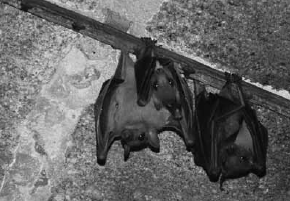
people used to collect bat guano from the
temples and use them in fields as fertilizer.
A preliminary chemical analysis of the
guano showed high levels of NPK, which
means that it would be effective addition
as fertilizer/manure. More importantly,
though, bats provide key ecosystem
services such as pollination, seed dispersal
and pest control of insects in paddy fields.
We hope to quantify the advantages of
maintaining these bat populations in the
next phase of our temple-bats research.
M. Mathivanan, Field Coordinator,
Agasthyamalai Community-based
Conservation Centre
|
|
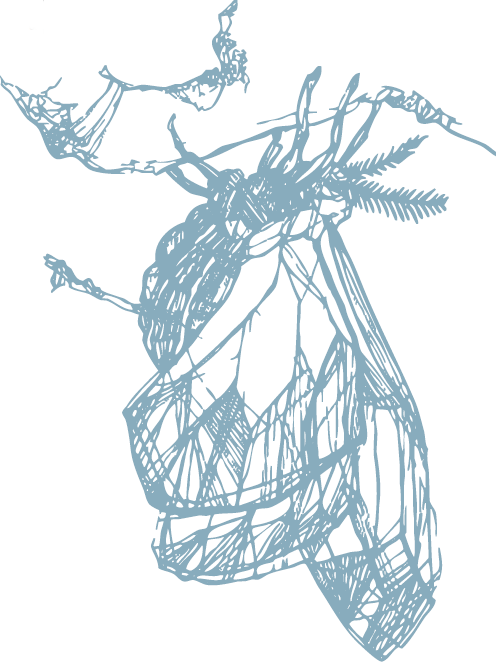
More experiments with crowd
sourcing: National Moth Week
The India Biodiversity Portal conducted
its second crowd sourcing effort—the
National Moth Week—from 19-27 July.
This global citizen science initiative
came quickly after the Neighbourhood
Trees Campaign in April, which had seen
encouraging response. The experiment
added 2,816 moth observations, 3,355
species pages and 121 documents through
the efforts of 181 users from across 150
locations. The exercise yielded valuable
spatial, temporal, and descriptive data on
moths from contributors.
But what about the quality of data received
from non-experts? Identification of moths
requires a level of expertise that is not
common in India. The portal attracted
some users who helped in identifying
observations. But the final verification is by
lepidopterists who park the observations
in their proper species pages and further
populate the pages with relevant content.
The portal itself, by definition of what
it seeks to accomplish, has always
been a work-in-progress site. This time,
the organizers drew lessons from the
interactions of the Neighbourhood
Trees Campaign, to improve contributor
experience: the portal enabled upload of
images in bulk, with provision for creating
observations from these images in batches.
This feature allowed users to return to the
images when convenient, and improved
efficiency of uploads.
For further information on IBP visit http://
indiabiodiversity.org/
Using urban wastewater
for agriculture in peri-urban
Bangalore
The urbanization-impacts project team of
the Land, Water and Livelihoods programme
organized a workshop on 'Water quality and
livelihoods in peri-urban Bangalore' with
invited experts in the areas of agricultural
economics, wastewater irrigation, pollution
regulation and water law to review three
years of completed work by the project,
and examine the plan for the next two
years in light of the ensuing discussions. |
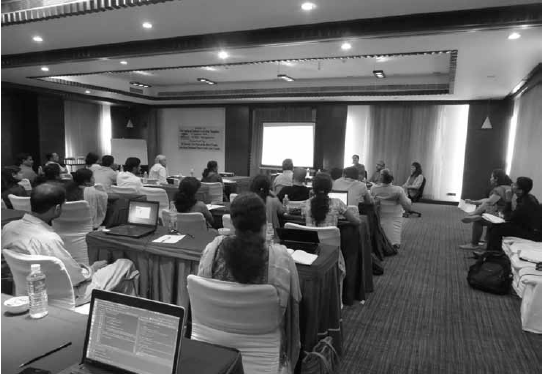 |
|
The project team had prepared draft
articles based on results from research so
far, which they presented in four technical
sessions in the day-long workshop. The
first session dealt with the impact of
wastewater irrigation on livelihoods in the
Vrishabhavathy catchment in peri-urban
Bangalore. The second session reviewed
the sources of pollution and the nature of
contaminants. The third session focused
on the issue of regulating industrial water
pollution. The final technical session was
devoted to a discussion of the proposed
health risk assessment planned for the
next phase of the project. The workshop
concluded with a panel discussion where
the experts commented on the larger
policy questions and research issues that
emerged from the day's proceedings.
The workshop, with 40 participants, was
held on September 15, 2014. Experts
invited were Dr. Priyanie Amerasinghe
(International Water Management
Institute, Hyderabad), Prof. Paul Appasamy
(Madras School of Economics, Chennai),
Ms. Lovleen Bhullar (Environmental Law
Research Society, New Delhi) Prof. M. G.
Chandrakanth (University of Agricultural
Sciences, Bangalore), Prof. Ligy Philip
(Indian Institute of Technology, Chennai),
Dr. Armin Rosencranz (Stanford University,
USA), and Dr. Rama Mohana Turaga (Indian
Institute of Management, Ahmedabad).
This project is supported by Sir Dorabji Tata
Trust and Allied Trusts.
|
Outreach
Vembanad Bioblitz
inauguration
Vembanad Bioblitz is a joint project initiated
by ATREE CERC, India Biodiversity Portal,
Wipro Foundation and the Jalapaadom
schools to nurture young talent in
biodiversity documentation and research.
The pilot project aims to provide school
children in the Vembanad area a platform
to identify, document and monitor local
biodiversity. The project was inaugurated
on 18 August at the Government HSS,
Karapuzha by the Honourable Minister of
Forest and Wildlife, Government of Kerala,
Shri Thiruvanjoor Radhakrishnan. Shri MP
Santhosh Kumar, Municipal Chairperson,
Kottayam presided. Field guides prepared
for the programme was also released
during the function.
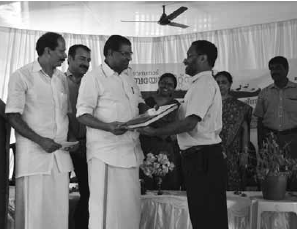
|
New
Recognitions
Chandrima Home, PhD batch 2009, and
Hita Unnikrishnan, batch 2011, got the
Best Student Talk Award at the Student
Conference on Conservation Science 2014.
Bangalore. 25-28 September for topics,
Predation 'dog'ma: patterns of livestock
depredation by a free ranging commensal
in the Upper Spiti landscape, Himachal
Pradesh; and Historical contestations
around an urban lake: lessons learnt for lake
management in Bangalore city, respectively.
Nachiket Kelkar, PhD batch of 2013 won
the quiz at the Student Conference on
Conservation Science 2014. Bangalore.
25-28 September.
People
Vivek Ramachandran has joined as
Consultant on the MoES hydrology project
of the Ecosystem Services and Human
Wellbeing programme. Sanjay Rattan,
Divya Soloman and Chidanand also as
Consultants on ATREE-Alliance of Religions
and Conservation project, CARIAA-ASSAR
(Adaptation at scale in semi-arid regions to
climate change and variability: Assessing
vulnerability and impacts on livelihoods)
and IDRC (Adapting to Climate Change
in Urbanizing Watersheds, or ACCUWa)
projects, respectively. Uden Bhutia is Junior
Research Fellow in the DBT-Eupatorium
project in Gangtok.

|
Workshops organized
Lele, S. Social science for conservation
biologists: an introduction. At the Student
Conference for Conservation Science 2014.
Sponsored by Indian Society for Ecological
Economics. Bangalore. 25 September 2014.
Publications
Book
Lele, S. and A. Menon (Eds). 2014.
Democratizing forest governance in India.
India: OUP
Book chapter
Lele, S. 2014. What is wrong with Joint
Forest Management? In: Democratizing
forest governance in India (eds Lele, S. and
A. Menon). Pp.25-62. New Delhi: Oxford
University Press.
Lele, S. and A. Menon. 2014. Epilogue. In:
Democratizing forest governance in India
(edsLele, S. and A. Menon). Pp. 402-414.
New Delhi: Oxford University Press.
Lele, S. and A. Menon. 2014. Introduction:
Forest governance beyond Joint Forest
Management, Godavarman, and tigers. In:
Democratizing forest governance in India
(eds Lele, S. and A. Menon). Pp. 1-22. New
Delhi: Oxford University Press.
Menon, A., V. Lobo and S. Lele. 2014. The
commons and rural livelihoods: shifting
dependencies and supra-local pressures.
In: Democratizing forest governance in
India (eds Lele, S. and A. Menon). Pp.
376-401. New Delhi: Oxford University
Press.
Rai, N. D. 2014. Views from the podu:
approaches for a democratic ecology of
India's forests.In: Democratizing forest
governance in India (edsLele, S. and A.
Menon). Pp.149-180. New Delhi: Oxford
University Press.
Swamy, S. and M. S. Devy. 2014. Reshaping
neighborhood parks for biodiversity and
people: a case of unsung socio-ecological
systems in Bangalore, India. In: Social-
ecological systems in transition (eds Sakai,
S. and C. Umetsu). Global Environmental
Studies. Japan: Springer.
Peer reviewed articles
Athreya, V., M. Odden, J. D. C. Linnell, L.
Krishnaswamy, K. U. Karanth. 2014. A cat
among the dogs: leopard Panthera pardus
diet in a human-dominated landscape in
|
western Maharashtra, India. Oryx 1 doi:
10.1017/S0030605314000106
Das, S., B. Behera and A. Mishra. 2014.
Factors affecting household perception
of wetland biodiversity conservation in
West Bengal, India. International Journal of
Ecological Economics and Statistics 34 (3).
David, P., R. Manakandan, T. Ganesh.
2014. Frugivory and seed dispersal by
birds and mammals in the coastal tropical
dry evergreen forests of southern India: a
review. Tropical Ecology 56(1): 41-55.
Goswami, R. and T. Ganesh. 2014. Carnivore
and herbivore densities in the immediate
aftermath of ethno-political conflict: The
case of Manas National Park, India. Tropical
Conservation Science 7 (3):475-487.
Ismail, S. A., J. Ghazoul, G. Ravikanth,
C. G. Kushalappa, R. Uma Shaanker,
and C. J. Kettle. 2014. Fragmentation
genetics of Vateria indica: implications for
management of forest genetic resources
of an endemic Dipterocarp. Conservation
Genetics doi: 10.1007/s10592-013-0559-7.
Ismail,S. A., J. Ghazoul, G.Ravikanth, C.
G. Kushalappa, R. Uma Shaanker, and C.
J. Kettle. 2014. Forest trees in human
modified landscapes: ecological and
genetic drivers of recruitment failure in
Dysoxylum malabaricum (Meliaceae). PLoS
ONE 9(2): e89437.
Krishnaswamy, J., S. Vaidyanathan, B.
Rajagopalan, M. Bonell, M. Sankaran, R. S.
Bhalla and S. Badiger. Non-stationary and
non-linear influence of ENSO and Indian
Ocean Dipole on the variability of Indian
monsoon rainfall and extreme rain events.
Climate Dynamics doi 10.1007/s00382-
014-2288-0.
N. Sapna Bai, O. K. Remadevi, T. O. Sasidharan,
M. Balachander and P. Dharmarajan. 2012.
Cuticle degrading enzyme production by
some isolates of the entomopathogenic
fungus, Metarhizium anisopliae (Metsch.).
Journal of Bio-Science 20: 25-32. (Note:
Though this paper was submitted in
2012 and shows that year as the year of
publication, it was published in 2014.)
Savitha M., Jojo T. D. and G. Kuriakose.
2014. Interspecific interaction between
Cryptocoryne sp. and Etroplus suratensis B.
(Pearl Spot) in the estuarine ecosystem of
Vembanad Lake in central Kerala. Heartian
Journal of Pure and Applied Sciences 3(1):
90-98.
Senthilkumar, U., R. K. Choudhary, M.
Sanjappa, D. Narasimhan, R. Uma Shaanker
and G. Ravikanth. 2014. Livelihood and
|

|
revenue: role of rattans among mongoloid
tribes and settlers of Andaman and Nicobar
islands, India. Ethnobotany Research and
Applications 12:141-154.
Shivanna, K. R. 2014. Reproductive
assurance through autogamy in some
annual weed species. Proceedings of the
National Academy of Sciences, India Section
B: Biological Sciences 84(3):681-687.
Shweta, S., M. B. Shivanna, B. R.Gurumurthy,
R. Uma Shaanker, T. R. Santhosh Kumar
and G. Ravikanth. 2014. Inhibition of
fungal endophytes by camptothecine
produced by their host plant, Nothapodytes
nimmoniana (Grahm) Mabb., (Icacinaceae)”.
Current Science 107 (6):994-1000.
Smitha, S. G., T. O. Sasidharan, O. K.
Remadevi and J. Bhattachaya. 2013.
Microsporidian infection in wild and
captive-bred populations of butterflies in
South India. Biosystematica 6(2):39-45.
Suma, H. K., V. Kumar, U. Senthilkumar,
P. Mohana Kumara, G. Ravikanth, T. R.
Santhoshkumar, R. Uma Shaanker. 2014.
P Pyrenacantha volubilis Wight, (Icacinaceae)
a rich source of camptothecine and its
derivatives, from the Coromandel Coast
forests of India. Fitoterapia 97: 105-110.
|
Popular press
Ramachandran, V. Security threat to
hornbill. Down to Earth. August 2014.
Papers presented in seminars/
workshops/symposia/conferences
Aditya, V. Assessing the impacts of
landscape change and habitat degradation
on mammal diversity and distribution
in the northern Eastern Ghats, Andhra
Pradesh, using ecological, geographic and
social information. At the Seminar on
Environmental Protection in the Eastern
Ghats. Held by Samata. Ananthagiri, Andhra
Pradesh. 28-30 August 2014.
Das, S., Behera, B., Mishra, A. Socioeconomic
and institutional issues of management of
two freshwater lakes in West Bengal, India.
15th World Lake Conference. Organized by
International Lake Environment Committee
(ILEC) in Perugia, Italy. Travel support
from Science and Engineering Research
Board (SERB), Department of Science and
Technology, Government of India.
Srinivasan, V., B. Thomas and P. Jamwal.
Adapting to climate change in urbanizing
watersheds. At conference on Climate
Change Vulnerability and Adaptation.
Organized by CSTEP, ISET-N and PAC.
Bangalore. 26-27 August 2014.
|
Invited lectures
Lele, S. Three lectures on 'Introduction
to GIS and Remote Sensing'. Department
of Agricultural Economics, Tamil Nadu
Agriculture University, Coimbatore. 8 July
2014.
Shivanna, M. B. - Resolving taxonomic challenges. Division
of Natural Resource Management, ICAR
Research Complex for North East Hill
Region. 31 July 2014.
- Biopropecting bioresources. Central
Agricultural University, Barapani,
Shillong, Meghalaya. 2 August 2014.
- Tree of life: angiosperm phylogeny.
Lecture workshop on Genetic Diversity,
Molecular Evolution and Genomics.
Vellore Institute of Technology, Vellore.
12-14th August 2014.
Grants
Sarala Khaling, Regional Director, ATREE
Eastern Himalayas. Euro 276,100 from
Karl Kubel Foundation for Child and Family
Welfare, Bensheim, Germany. For the
project, 'Integrated approaches to enhance
livelihoods sustainability of communities
in the fringe areas of Manas Tiger Reserve,
Assam'. July 2014-December 2017.
|
|
 www.atree.org www.atree.org
|
Head Office
Bengaluru
Royal Enclave, Sriramapura
Jakkur Post, Bangalore 560 064
Tel: +91-80-23635555,
Fax: +91-80-23530070
Regional offices
Eastern Himalayas
Khangsar House,
Above Brahmakumari, Development Area
Gangtok 737101
Tel: +91-3592-206 403
New Delhi
2nd Floor, 1, K Commercial Complex
Birbal Road, Jangpura Extension
New Delhi 110014
Tel: +91-11-2432 3133
Governing Board
Dr. Kamaljit S. Bawa ( Chairman)
Dr. K. N. Ganeshaiah
Dr. R. Uma Shaanker
Mr. Darshan Shankar
Ms. Rohini Nilekani
Dr. Surinder M. Sehgal
Ms. Seema Paul
Ms. Pheroza J. Godrej
Dr. K. S. Jagadish
Mr. A. N. Singh
Dr. S. Natesh
Dr. Ganesan Balachander ( ex-officio)
Dr. Priyadarsanan Dharma Rajan( faculty)
Executive Committee
Dr. Ganesan Balachander ( Chair)
Dr. Ankila Hiremath ( Faculty representative)
Dr. Abi Tamim Vanak ( Faculty representative)
Dr. Sharachchandra Lele ( ex officio)
Dr. Jagdish Krishnaswamy ( ex officio)
Dr. Nitin Rai ( ex officio)
|
Advisory Board
Pl note: * will also serve on the Faculty Advisory Committee
* Dr. Vijay Raghavan, Director, National Centre for Biological Sciences, Bengaluru
Dr. Raghavendra Gadagkar, INSA SN Bose Research Professor and JC Bose National Fellow, Centre for Ecological Sciences, Bengaluru
* Dr. Amita Baviskar, Associate Professor, Institute of Economic Growth, Delhi
* Dr. Navroz K. Dubash, Senior Fellow, Centre for Policy Research, New Delhi
* Dr. Gita Sen, Professor, Centre for Public Policy, Indian Institute of Management, Bengaluru
Mr. Raj Khoshoo, Senior Vice President, Siemens PLM, CA, USA
Ms. Kalpana Sharma, independent journalist, Mumbai
Dr. Ravi Chopra, Director, People's Science Institute, Dehradun, Uttarakhand
* Dr. S. P. Singh, Former Vice Chancellor, Advisor, State Planning Commission, Government of Uttarakhand, Dehradun, Uttarakhand
Dr. Ramesh Singh, Director, Learning, Monitoring and Evaluation, Office of the Director of Programs, Open Society Institute, New York
Convenors and Programme Leaders
Dr. Jagdish Krishnaswamy,
Ecosystem Services and Human Well-being and Convenor, Suri Sehgal Centre for Biodiversity and Conservation
Dr. Sharachchandra Lele,
Forests and Governance and Convenor, Centre for Environment and Development
Dr. Priyadarsanan Dharma Rajan and Dr. Ankila Hiremath,
Ecosystems and Global Change
Dr. Shrinivas Badiger
Land Water and Livelihoods
Academy
Dr. Nitin Rai,
Convenor, Academy for Conservation
Science and Sustainability Studies
This newsletter has been put together from reports by ATREE folk. Design and lay out is by Salil Sakhalkar. Editing by Samuel Thomas, Ganesan Balachander and Meetu Desai.
|
|





